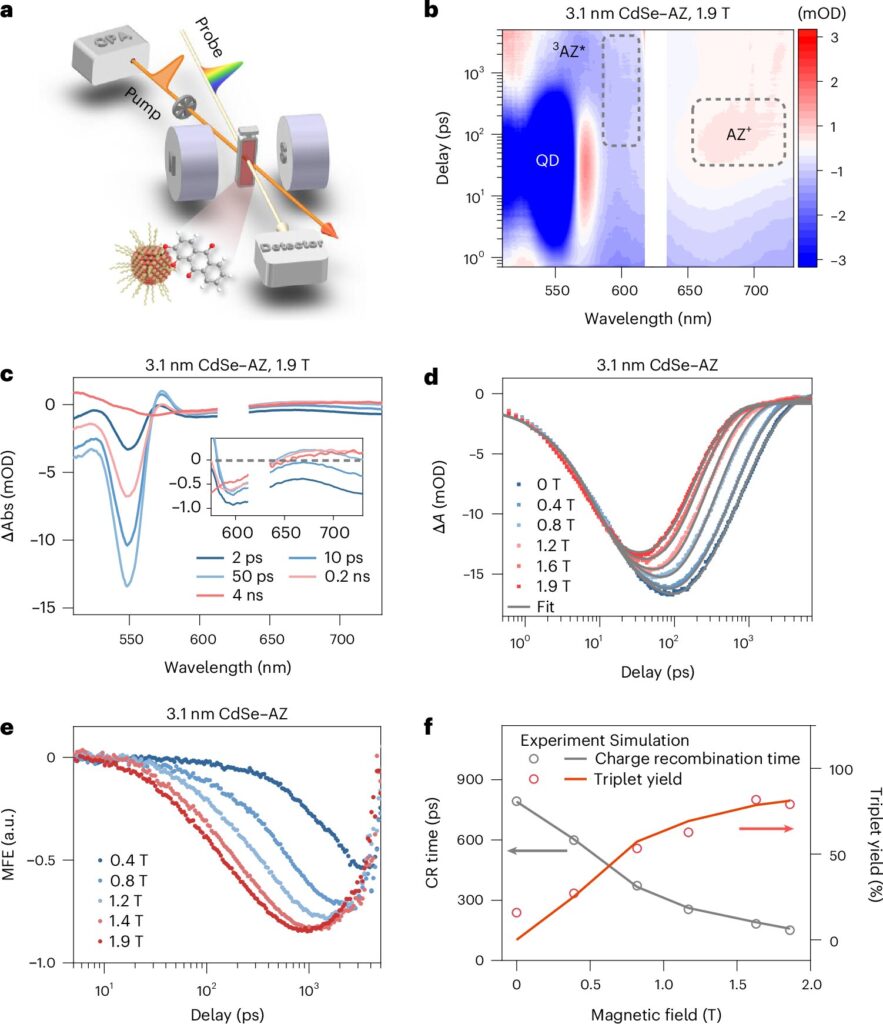Colloidal quantum dots (QDs) constitute a platform to explore various quantum effects. Their size-dependent colors are essentially a naked-eye, ambient-condition visualization of the quantum confinement effect.
In recent years, more exotic quantum effects have been observed using the material platform of QDs, such as single-photon emission, spin coherence, and exciton coherence. The beauty of these QDs in comparison to other solid-state quantum platforms is that QDs can be handled in solution just like molecules, which allows for functionalization of their surfaces with organic molecules to drive various photochemical processes.
The simultaneous capability of colloidal QDs to sustain robust room-temperature spin quantum coherence and to engage in photochemistry inspired Prof. Wu Kaifeng and his team from the Dalian Institute of Chemical Physics of the Chinese Academy of Sciences to explore a highly interdisciplinary field—using quantum coherence of QDs to control photochemical reactions.
This idea is in close relation to a fascinating example of quantum biology, in which migratory animals are believed to use the Earth’s magnetic field to coherently modulate the spin-triplet recombination yields of photogenerated radical pairs and subsequently trigger a sensory signaling cascade for navigation.
In a study published in Nature Materials, Prof. Wu’s team reported the hybrid radical pairs prepared from colloidal QDs and their surface-anchored molecules, and demonstrated the unique “quantum advantage” of hybrid radical pairs in quantum coherent control of triplet photochemistry.
Unlike pure organic radical pairs featuring a pair of electrons with similar Landé g-factors and thus a small Δg (0.001–0.01), the large Δg (0.1–1) of the hybrid radical pairs, along with the strong exchange coupling enabled by quantum confinement of QDs, allowed for direct observation of the radical-pair spin quantum beats that are usually hidden in previous studies.
Leveraging such rapid quantum beating, researchers demonstrated a strong magnetic field control over the triplet recombination dynamics, with the modulation level of the triplet yield reaching 400% at 1.9 T. Moreover, the magnetic field effect was facilely tunable through QD size and composition, which is an unmatched advantage over previous pure organic radical pairs.
“The QD-molecule hybrid radical pairs and their strong, tunable magnetic field effect reported in this study will strongly benefit the spin-control over molecular and hybrid inorganic/organic optoelectronics through borrowing the fundamental principles of semiconductor spin physics,” said Prof. Wu.
“Hybrid radical pairs may constitute a unique material platform to merge the field of emerging molecular quantum sciences with solid-state quantum platforms to enable many novel quantum information technologies,” he added.


